Ohiki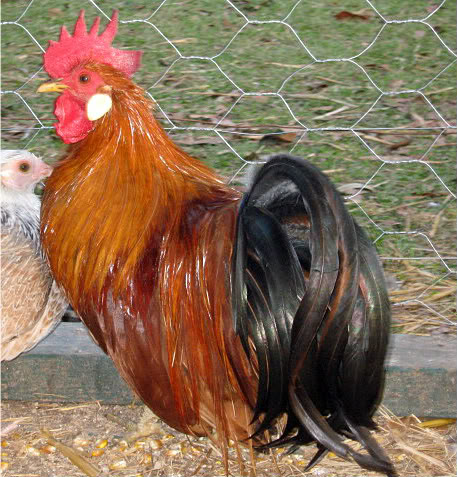
In 2011, Mrs. Toni-Marie Astin offered us some of her awesome Ohiki from her 2002 imports. The resulting 9 years of work she has put into to these birds has created a much stronger breed in a much wider array of colors than every existed. The Ohiki is a small True Japanese Bantam. Most will compare them to phoenix, while they are similar in they have white ear lobes, and a single comb, the similarities end there. They are a very short legged and round bodied breed, have fine , soft feathers, and are a multiple feathered breed. The results of all this is a truly breath taking small bird with a very thick flowing tail and saddles. They are a slow feathering breed, most males are into their second year before they reach their fullest potential, but trust me, they are worth the wait. They are extremely rare in the States, most have never even seen one in person, so being given the chance to work with this breed was a true honor for me. We currently will not be offering any to other homes at this time. We have a few years of work to do in order to build up our own flock as well as work on a few other colors too.
d'Anver 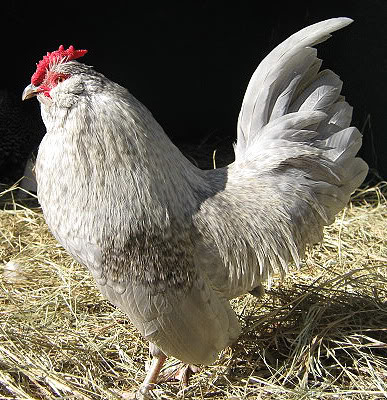
Belgian Antwerp d'Anvers are one of the oldest known breeds of true bantams in the world. They were first discovered in Anver Belgium back in the mid 1600's. They are a small built but muscular bantam. They have a very upright posture, muscular build, posture is wings down, head back, and tail up. They should have a tight close fitting , well spiked rose comb, little to no wattle, heavy beards, and thick earmuffs. They are most commonly found in quail and blue quail colors, but come in a wide largely unknown array of colors, 9 of which are recognised by the APA and 14 by the ABA standard. They are very rare out side of the quail color in the US, making our collection of 30 + colors quite unique. The colors we have are as follows (some May not be available at this time): Quail, Blue Quail, Silver Quail, Dun Quail, BB Red, Buff, Black, Blue, White, Splash, Self Blue, Cuckoo, Lavender Cuckoo, Mille Fleur, Porcelain, Black Mottled, Ginger Red, Blue Cuckoo, Dun Cuckoo, Solid Dun, Buff Columbian, Blue Buff Columbian, Crele, Blue Red, Brown Red, Dun Mottled, Red Pyle, Goldneck, and more to come. We are constantly working on adding new colors to our collection so check back often. We have about 20 more colors in various stages of development.
Long Tails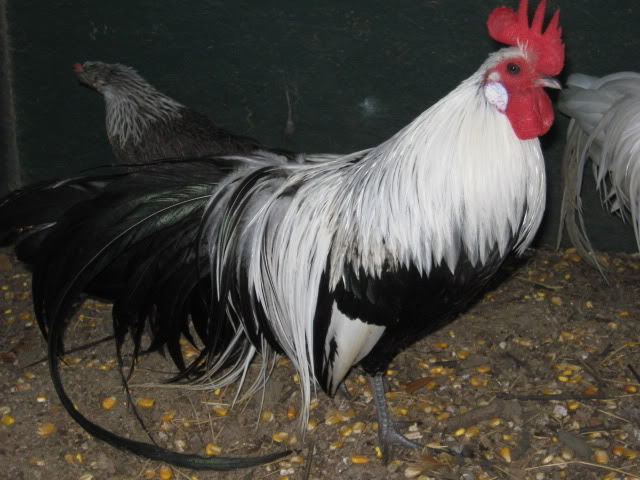
Currently we are working with 3 breeds of long tailed bantams, the Phoenix , the Ohiki, and the Sumatra. All our stock came from top breeders in the country. 90% or better of our phoenix and all our Ohiki came from Toni-Marie Astins collection. The remainder of our Phoenix lines are from Cy Hyde. In the bantam phoenix we have many colors including White, Silver Duckwing, BB Red, Lavender, Blue Golden, Black, Dun, Brown Red, Birchens, Blue Silver, Dun Silver, Shojo, Silver Ginger, Blue Silver Ginger, Barred Silver, Cuckoo, and Gold Duckwing.
In addition to the Bantam Phoenix, Toni-Marie gave us a huge start in the German Large Fowl Imports she had. These are the Schubert and Ismer lines she imported threw Marc King back in 2002. They are a superb example of the breed in every way and totally unrelated to any line currently in the US. We have never been much of a large fowl family, but these birds are a true prize to have regardless of the size you prefer and I have honestly fallen in love with them. The Ismer line in particular is a small line anyway and can be used either way in breedings. Both lines, though slow to feather compared to US birds, offer excellent tails and saddles with really good length and fullness to them. We have the blacks and duckwing colors in these.
Contrary to popular belief, Phoenix originated in Europe and to a lesser degree the USA, not Japan despite nearly all hatcheries claiming they are of Japanese origin. They were created by breeding the Onagadori to various other breeds like Leghorns, Dutch and various Games. They are great layers. They should have nice 2 to 4 foot tails if acquired from proper stock, the large fowl even longer. Their legs must be slate blue to qualify as a true Phoenix, unless they are mottled or barred in which case they will have pearl legs. They have single combs and white ear lobes.In addition to a nice long tail they should have long flowing saddles and converts some of which can reach 18 inches in bantams and 2-3 foot in Large Fowl. They have no special care requirements as a breed in general, BUT for the best kept tails, fully roofed pens, with thick hay beds and covered waterers are a must. Damp and muddy pens are a nightmare on tail length. Also when kept in breeding pens, the hens themselves will step on and either break or damage the tails. Solitary well kept males will have the best tail length and are best for your shows. But this is not mandatory in the husbandry.
Bantam Sumatra 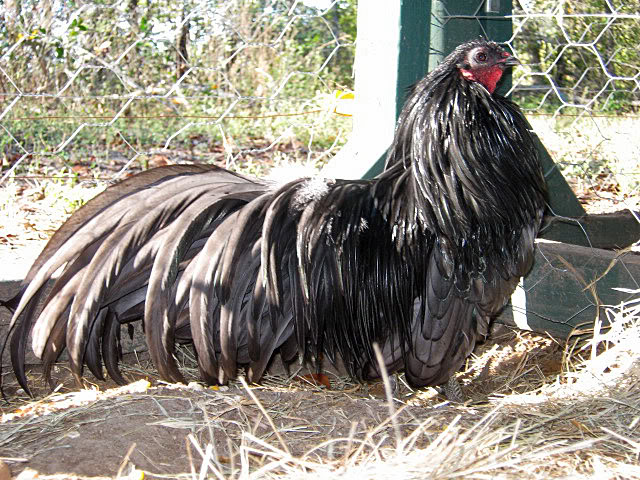
The Bantam Sumatra is another long Tailed breed which I truly love. We currently offer them from our awesome blues and blacks. These are bred together so a splash is fairly common to get as well.We are also working on the dun bantam Sumatra(Thanks to Toni-Maries help) as well and have many other project colors in the works on them, including duckwing and birchens, whites, and platinum. It'll be a few years on those though. This is a more gamey style of bantam than the other long tails we keep, yet ours are not aggressive at all.They are a more muscular bodied breed, are mulit spurred, and have black legs with yellow feet. They also have Black, Gypsy faces but yellow skin elsewhere, red lobes, pea combs, and virtually no wattles.The faces are often much lighter in the US on non black colors. Their tail carriage is something I really like about them. It's carried at or near horizontal usually under 30 degrees and in good specimens flows long smooth and drags evenly all the way out. The saddles and converts should give a visual effect of them all being the same length. Originally this breeds main purpose was a fighting bird. Thankfully today, they are classed as an ornamental breed, and well deserve the title!
______________________________________________________________
Private orders for eggs and chicks are always welcome!
Bantam Chicken laying season: February - November
Pricing & Shipping: Eggs will be collected and shipped as soon as we have received payment. Chicks will be hatched and shipped after we have received payment (please allow 21 days or more for incubation). Shipping by Priority Mail for eggs or Express Mail for chicks. There is no minimum order for eggs or chicks if they are picked up at the farm. For chicks to be shipped we do require a minimum order of 20. Prices may vary, please e-mail us for complete details.
In Loving Memory...
Squiggy
(D'Uccle Roo)
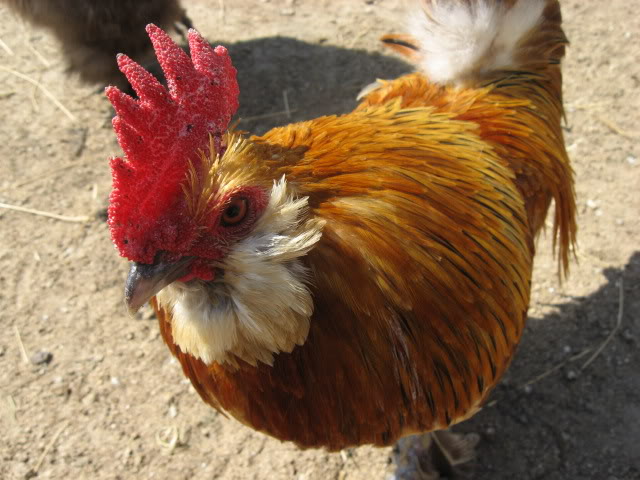
![]()




